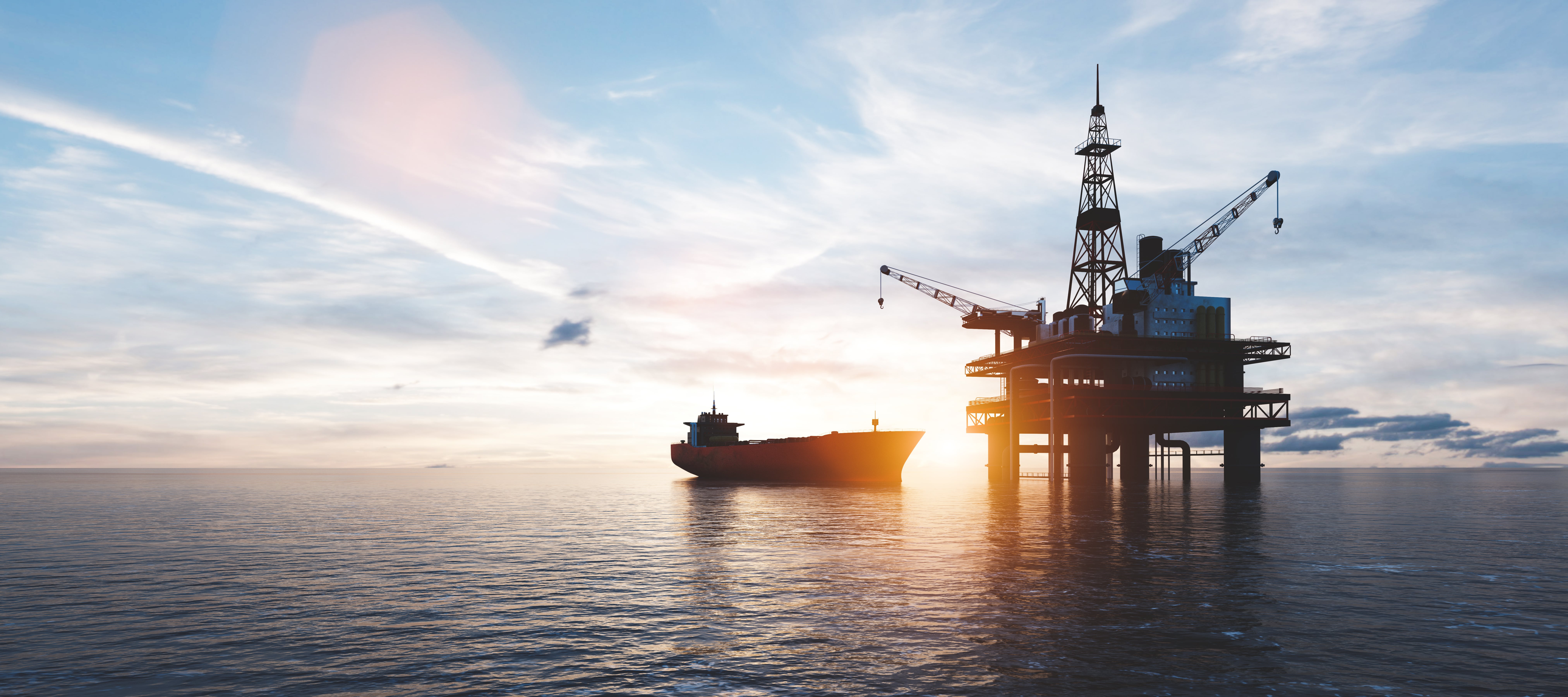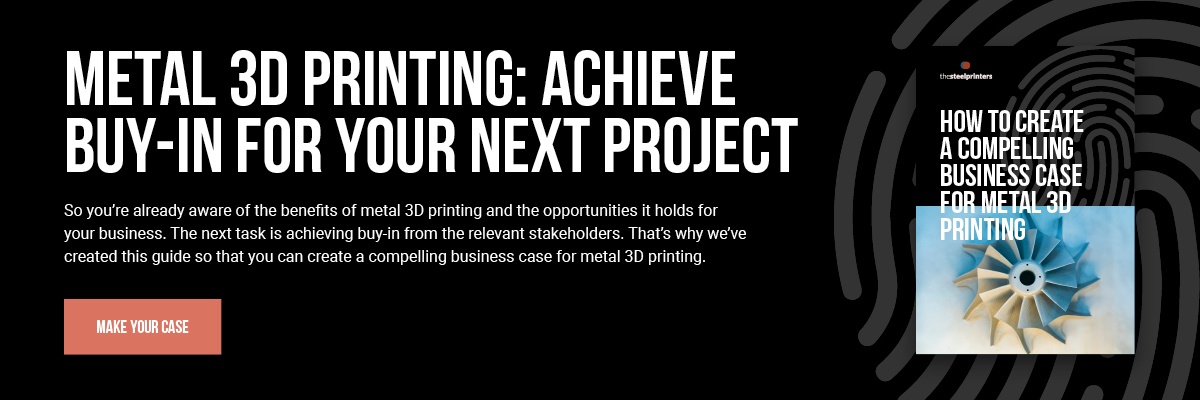Metal additive manufacturing shows no signs of slowing down. Offering multiple benefits and...
The oil and gas industry is one of the most important in the world. Not only does it provide the energy we need to conduct our daily lives, it’s also a vital source of employment and technological innovation. As the industry continues to evolve, it is turning towards new manufacturing technologies to address growing operational costs and price volatility.
Oil and gas companies are considering additive manufacturing to meet their spare part production needs. It’s estimated that this technology can generate as much as $30 billion of added value savings for companies in the sector. Keep reading to discover more about the opportunities of additive manufacturing for the oil & gas industry.
- What Is Metal Additive Manufacturing?
- How Is Metal Additive Manufacturing Being Used in the Upstream Oil and Gas Sector?
- What Are the Benefits of Using Metal Additive Manufacturing in the Oil and Gas Industry?
- Are You Ready To Start Investing in Metal Additive Manufacturing?
What Is Metal Additive Manufacturing?
Metal additive manufacturing is another term for metal 3D printing, a technology transforming how heavy industry operates and moves forward in the future. Predicted to reach a market value of $11.6 billion by 2028, it isn’t something to ignore.
The oil and gas industry has been comparatively slow to adopt additive technologies, lagging behind the automotive and aerospace sectors. However, this has recently changed, with oil and gas now expected to be one of the fastest-growing markets for metal additive manufacturing.
This is due to the cost savings opportunities that 3D printing presents, specifically relating to supply chain optimisation and downtime risk reduction.
Big names such as Shell, Baker Hughes and GE are all investing in additive manufacturing to design, create and validate 3D-printed components to improve their operations.
Producing Higher Performing Components with Faster Lead Times
Metal 3D printing has the ability to produce parts with high mechanical properties and complex geometries due to the design freedoms the technology offers.
The ability to produce complex shapes allows for greater design optimisation, meaning parts can perform better and last longer in extreme operating environments. On top of this, parts can be manufactured and delivered with much shorter lead times, reducing inventory requirements and operating downtime risk.
So how is additive manufacturing being used in the upstream oil & gas industry?
How Is Metal Additive Manufacturing Being Used in the Upstream Oil and Gas Sector?
Minimising risk is essential for oil and gas companies to achieve their production output targets. Hence, they’re turning to metal 3D printing to produce reliable and high-performing parts.
The upstream stage of the industry is where metal 3D printing holds the most potential. The upstream oil and gas stage comprises of exploration and production activities, which are highly capital-intensive, present many operational risks and rely upon technologically innovative solutions.
The upstream oil and gas sector has mainly been using metal 3D printing to manufacture downhole components, which have numerous design variations and are produced at low to medium production volumes.
At first, the technology was only used to produce functional prototypes, but due to the advancements in 3D printing technologies, it’s now being used to create end-use parts. This includes both the production of legacy parts and newly designed components.
To help you get an idea of the applications and use cases of metal 3D printing, it’s best to look at different stages of the value chain individually.
Drilling Operations
During drilling operations, downhole tools are subjected to high temperatures, pressures, shock and vibration, as well as erosive drilling fluids. So, how can metal 3D printing improve performance?
3D printing allows for greater levels of design optimization. In the case of drilling applications, highly optimised flow profiles can be created to minimise erosion on bottom hole assembly components.
In terms of materials, parts can be printed using high-grade steels like 17-4PH or super alloys such as Inconel718, which have the performance properties to withstand extreme drilling conditions.
To help you get an idea of the opportunities metal 3D printing holds for oil and gas drilling applications, here are some use case examples:
- Drill bits with optimised nozzle designs and cooling channels to improve cutting performance and extend cutter lifespan.
- Optimised fluid profiles for downhole modulator and turbine components, such as rotors, stators and housings used in MWD and rotary steerable systems.
- Optimised fluid profiles of endcaps and centralisers to improve erosion resistance.
Well Completion
Sand control is one the biggest challenges in the well completion phase. Reservoir sand entering the wellbore can block tubulars and erode downhole and surface equipment. Having the correct sand control solution for a particular well is critical to maximising production output and minimising maintenance spend.
A key advantage of additive manufacturing is the ability to produce complex and customised parts in small production batches, at a lower unit cost compared to traditional manufacturing methods.
Optimised, bespoke sand control components can be designed and deployed cost-efficiently. This benefit also extends to other well completion tools, such as liners, packers and clean-out tools.
Here are some use cases of how metal 3D printing can advance the well completion stage:
- Downhole sand control components such as screens and intake valves with bespoke geometries based on the unique reservoir conditions.
- Wellbore clean-out tools, specifically nozzle designs with optimised flow profiles to minimise erosion.
- Liner hanger and packer system components with intricate geometries can be produced rapidly without the need for complex machining.
Artificial Lift
96% of oil wells require some form of artificial lift solution to maximise production output, whether that be a downhole submersible pump (ESP) or a surface pumping system.
Ensuring consistent well production outputs and reducing the risk of maintenance intervention is a key concern at this production stage. Artificial lift equipment must carry reservoir fluids from the production zone to the surface, and therefore must work under erosive and corrosive operating conditions for long durations.
It’s important that artificial lift equipment is designed for reliability — this is where metal 3D printing can help. Due to the enhanced design freedoms that 3D printing provides, it is possible to produce pump components with complex, optimised flow profiles to increase performance and durability.
Some key examples of how metal 3D printing presents opportunities at this production stage are:
- ESP impellers and diffusers, made of erosion-resistant materials with significantly shorter lead-times compared to traditional manufacturing.
- Surface pumping system components — such as valve components for gas lift and hydraulic pump systems — that require flow optimised designs.
What Are the Benefits of Using Additive Manufacturing in the Oil and Gas Industry?
Minimise Operating Downtime and Lead Times
Mitigating the risk of downtime is essential in upstream oil and gas — a sector that experiences high operating costs. Even just one day of equipment downtime can lead to the loss of hundreds of thousands of dollars worth of non-productive time.
Due to the fast nature of the metal 3D printing process, parts can be designed, printed and delivered in record time, reducing lead times and costly potential downtime.
Components with intricate geometries can be manufactured rapidly, as there isn’t the need for pre-production tooling and complicated setup processes — simply upload the digital file of the final part to the printer and you can begin production.
Easy Access To Spare Parts
Many oil and gas operations are in remote locations, making quick access to spare parts difficult.
Metal 3D printing reduces the geographical footprint of manufacturing – providing sustainability benefits. The entire part can be printed from a single printer that can be located close to the production site, rather than relying on suppliers hundreds of miles away. This also reduces the need for excessive inventory levels due to shorter lead times.
The result? Decentralised and simplified supply chains.
Reliable Parts
Metal 3D printing can produce complex parts with high mechanical performance properties The material density of metal 3D printed parts is typically higher than that of metal cast parts.
Due to the nature of the additive manufacturing process, it’s possible to produce optimised designs that would not be achievable using traditional manufacturing methods. As a result of this, you can expect to produce longer-lasting parts and see a reduction in maintenance spending.
Produce Legacy Parts
Legacy parts can pose a problem for oil and gas operations, particularly if vital equipment relies upon them. However, these parts can be recreated by scanning the part, creating a 3D CAD model and then 3D printing.
If only low production volumes are required, metal 3D printing is a faster and more cost-efficient method of producing legacy parts.
Are You Ready To Start Investing in Additive Manufacturing?
Then why not take the first step and begin preparing your business case? To help you along the way, we’ve created this helpful and insightful guide with all the information you need.
We’ve covered the opportunity for added value savings, how design and metal 3D printing go hand in hand, and a practical example to follow. Get your copy now by clicking the link below.




